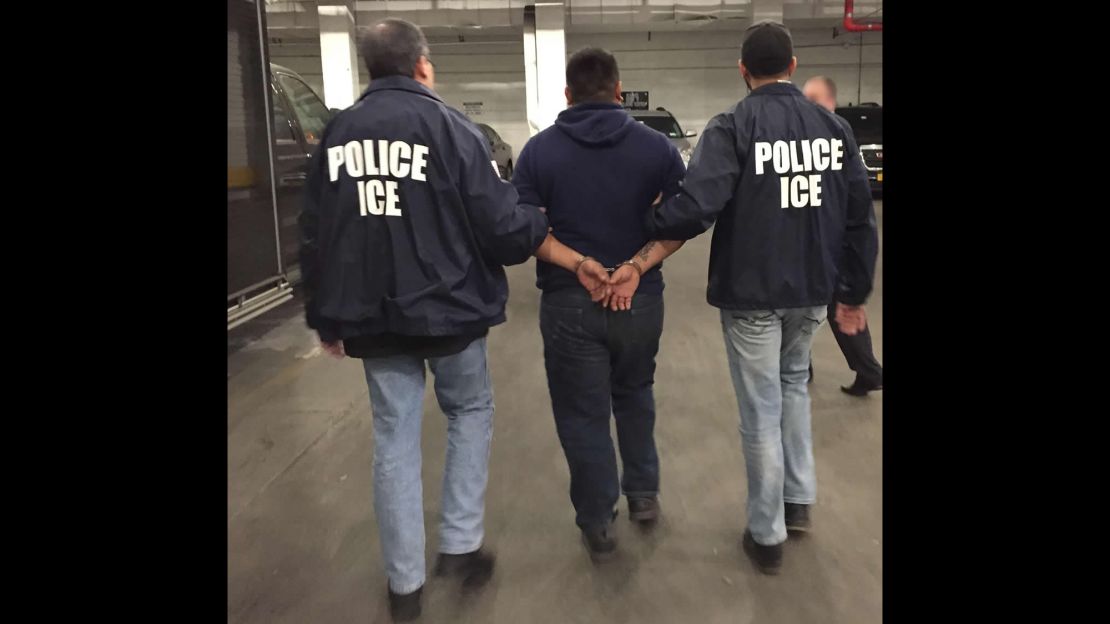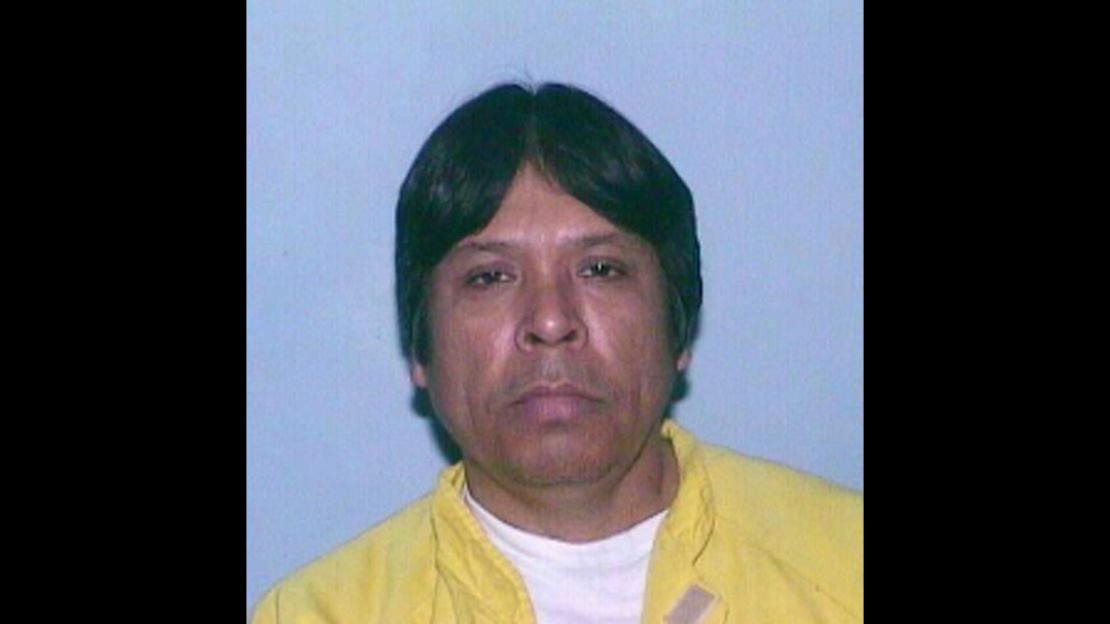Story highlights
President Trump has made immigrants with criminal convictions a focus, calling them "bad dudes" and "bad hombres"
While Trump's tough talk gets attention, Obama deported hundreds of thousands of people with criminal records
Though studies show that immigrants on the whole are less likely to commit serious crimes than the native-born population, President Donald Trump has made crimes committed by immigrants a particular focus.
Calling them “bad dudes” and “bad hombres,” Trump promised early on that he would deport all undocumented immigrants with criminal records: 2 to 3 million people by his estimate, a figure that has not been substantiated elsewhere.
“The gang members – bad, bad people,” he said during a February speech in Melbourne, Florida. “I said it day one. And they’re going out, or they’re being put in prison.”
While Trump’s tough talk gets a lot of attention, his predecessor deportedhundreds of thousands of people with criminal records – so many that critics called President Barack Obama the “deporter in chief.” During the bulk of the Obama administration – from fiscal years 2009 to 2016 – 2,749,706 people were deported in total, ICE records show.
Deporting more criminals than Obama? It’s too early to say
Of all those removed from US soil in 2009, Obama’s first year in office, 35% had been convicted of a crime. That percentage increased to 50% in 2010, according to ICE, and then hovered between 55% and 59% for the remainder of Obama’s time in office.
Aiming to deport more immigrants with criminal convictions than his predecessor, Trump has issued executive orders that expand the powers of individual ICE agents.
These policies tell ICE to cast a wider net. While undocumented immigrants with a criminal history still top the list of enforcement priorities, other undocumented groups are less protected from deportation than they were under Obama.
“(Homeland Security) Secretary (John) Kelly has made clear, with very limited exceptions, ICE will no longer exempt classes or categories of removable aliens from potential enforcement,” ICE spokesperson Jennifer Elzea said. “Any alien encountered during the course of targeted enforcement actions is subject to removal.”
The agency “does not conduct sweeps or raids that target aliens indiscriminately,” Elzea said. Instead, “ICE conducts targeted immigration enforcement in compliance with federal law and agency policy.”
Critics say Trump’s statements about focusing on deporting dangerous criminals are inconsistent with the direction of his executive orders on immigration. “I think there is tension between the statement ‘we are going after those who have criminal records’ and then the actual actions of the agency, which suggests that immigration enforcement will not be focused,” UCLA School of Law professor Ingrid Eagly said.
With broader enforcement, Eagly said, comes the diluting of enforcement resources available to go after criminals, and the Trump administration doesn’t clearly define the types of crimes that are to be prioritized by immigration agents.
Instead, the President consistently uses broad terms like “bad dudes” and “bad hombres” to describe the people he wants to go after. “I think it creates an environment of fear and terror in immigrant communities,” Eagly said. “There is no clear understanding of how the agency is going to operate and who it’s going to target.”
A little more than two months into Trump’s administration, it’s too early to tell what impact the shift in enforcement priorities will have on the rate of criminal deportations.
So far, Trump’s efforts are consistent with his predecessor’s. In February 2017, the first full month of Trump’s presidency, 17,226 people were removed from US soil, 52% of whom (9,032 people) were convicted criminals, according to ICE. During the same period last year, under the Obama administration, 17,606 people were deported, 60% of whom (10,509 people) were convicted criminals.
But too little time has passed to determine any long-term trends, Elzea cautioned. Some experts say you need at least six months to a year’s worth of data before seeing the effect of a policy.
That said, as during the Obama administration, ICE has been regularly apprehending immigrants convicted of crimes. Here’s a look at a few of the peoplethe agency said it has apprehended and put on the road to deportation in the first months of the Trump administration.
A look at recent ICE apprehensions
A convicted robber

In 2003, when Luis Alejandro Villegas was 17 years old, he and three others knocked on the door of a home in the Bronx. Villegas held a gun to the head of the man who answered, police said, while the others tied him up and robbed him. Villegas was arrested and pleadedguilty to robbery in the first degree, according to New York state records. He received a five-year prison term and was deported to Mexico in 2007, according to ICE.
At some point, Villegas returned to the United States. Police said he was arrested on suspicion of drunk driving on December 31, 2016, after he allegedly drove through a red light and officers who stopped himsaid he hadbloodshot, watery eyes. The 31-year-old was released by local authorities and ICE agents arrested him 25 days later.
A prison escapee

Jorge Soberanis-Rumaldo escaped an Illinois prison in 2003, where he had been serving out an eight-year sentence for a felony cocaine conviction, according to state authorities. The Mexican national was on the run for 14 years before ICE agents arrested him in Atlanta on February 17.
The 58-year-old was at that time the sixth most-wanted fugitive on the Illinois Department of Corrections’ list.
One of the agency’s ‘most-wanted’ fugitives

Javier Atlixqueno-Vaquero was convicted in 2002 of crimes including felony sale of a hallucinogen/narcotic controlled substance and felony failure to appear in court, according to court officials. He had been sentenced to seven years in prison for the first charge and two years for the second charge, and was to serve the sentences concurrently in a Connecticut prison, but was deported in May 2004.
Atlixqueno re-entered the United States unlawfully at an unknown date, ICE said. ICE agents apprehendedthe 37-year-old Mexican national, who made ICE’s most-wanted list, outside his New Jersey residence on January 31.
CNN’s Tal Kopan contributed reporting.






